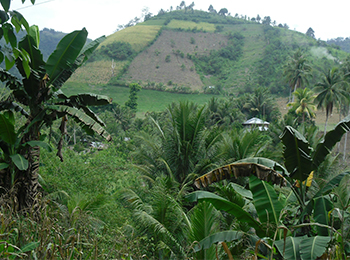About 1 result/s
-
Volume 5, Issue 1, October 2022
There is a need to strengthen disaster preparedness and resilience at all levels of society in the
country. This study was conducted to assess, based on capitals, the level of disaster preparedness
of selected households, barangays, and municipalities in the Province of Laguna.

-
Volume 4, Issue 1, April 2021
This study assessed the climate trends, changes, impacts, and adaptation strategies of farm households in five barangays in the Roxas mountain range, Koronadal City, South Cotabato by using household survey data from 265 respondents, and complimented with focus group discussions, and key informant interviews. The findings of the study revealed that climate changes are manifested by floods, landslides, and droughts as experienced by the local people which caused devastation and affected socioeconomic and environmental conditions of farming livelihood. Farmers used to have bountiful harvests, however, this situation recently changed due to the increasing climate-related risk events. The existing adaptation strategies are just stop-gap solutions that address the effects of climate change, but do not consider the root causes. To consider future changes in climate patterns, the socioeconomic and political structure and processes of the communities need to change by addressing multifaceted drivers of climate change hazards and their impacts. Some grassroot-level transformative adaptation strategies identified in the study consisted of socioeconomic facets, specifically, investment in children’s education, financial management, family planning, and development of alternative on-farm and nonfarm livelihood options. The environmental aspect, including the promotion of agroforestry system, water impoundment technologies, and advanced early warning system, were also considered.

-
Volume 4, Issue 1, May 2019
Rainwater harvesting
(RWH) is an existing technology proven to be effective in reducing pressure on water
resource, yet often overlooked as a viable alternative for supplying water to
households and businesses while reducing stormwater runoff in urban settings. This
paper developed, fabricated and tested various collapsible rubber tank (CRT)
designs and influence water users and decision-makers to strongly support RWH. With
proper handling and maintenance, CRT can be a good alternative for rainwater
storage and can be used in hard-to-reach areas particularly during emergency
situations and relief operations.

-
Volume 3, Issue 1, December 2018
Only few studies investigated the adaptive capacity or
adaptation practices of indigenous peoples (IPs) in the Philippines and none so
far in the Compostela Valley. Since the landslide and flash flood events in
2012 brought by Typhoon Bopha, no systematic study has been conducted to
compare the adaptive capacity of IPs and non-IPs in New Bataan’s most affected
communities. This paper contributes to the assessments of adaptive behavior
with the ultimate goal of stimulating adaptation support to the most vulnerable
people.
-
Volume 3, Issue 1, February 2018
Tacloban, Philippines, the city most devastated by typhoon Haiyan in 2013, faces severe water supply constraints, particularly on the relocation sites that are expected to accommodate 40% of Tacloban's population by 2018. This study assess the impacts of climate change on the hydrological system on which Tacloban relies for water supply purposes.
-
Volume 2, Issue 2, July 2017
Vulnerability to flooding due to climate change results in limited access to resources, soil erosion and/or deposition, and reduced quality of water supply among others, affecting many farming communities. Recognizing the need to assess and better understand the adaptive capacity of farming communities, this study determined the effects of flooding and assessed the adaptive capacity levels of farming households in Mabitac, Laguna, Philippines as a case.
-
Volume 2, Issue 2, July 2017
The livelihoods of Aytas of Floridablanca, Pampanga, Philippines are dependent on natural resources, which are prone to climate change impacts. To assess their adaptive capacity, this paper analyzed the different resources available in their community using the Sustainable Livelihoods Approach Framework.
-
Volume 2, Issue 2, July 2017
In many small island developing states (SIDS), tourism is a principal driver of the economy and of infrastructure development. The SIDS’ tourism sector is, however, threatened by climate change impacts, which will likely incur high costs for climate change adaptation (CCA).
-
Volume 2, Issue 2, June 2017
General circulation models (GCMs) are essential tools for understanding climate behavior and projecting future global climate, but with limited applications for local vulnerability assessments, impact studies, and risk analyses.
-
Volume 2, Issue 1, January 2017
Advancing climate change and increasing frequency of El Niño events will impact corn growth and development in Isabela Province. This study assessed the potential impact of El Niño and climate change on yellow corn (Zea mays L.).